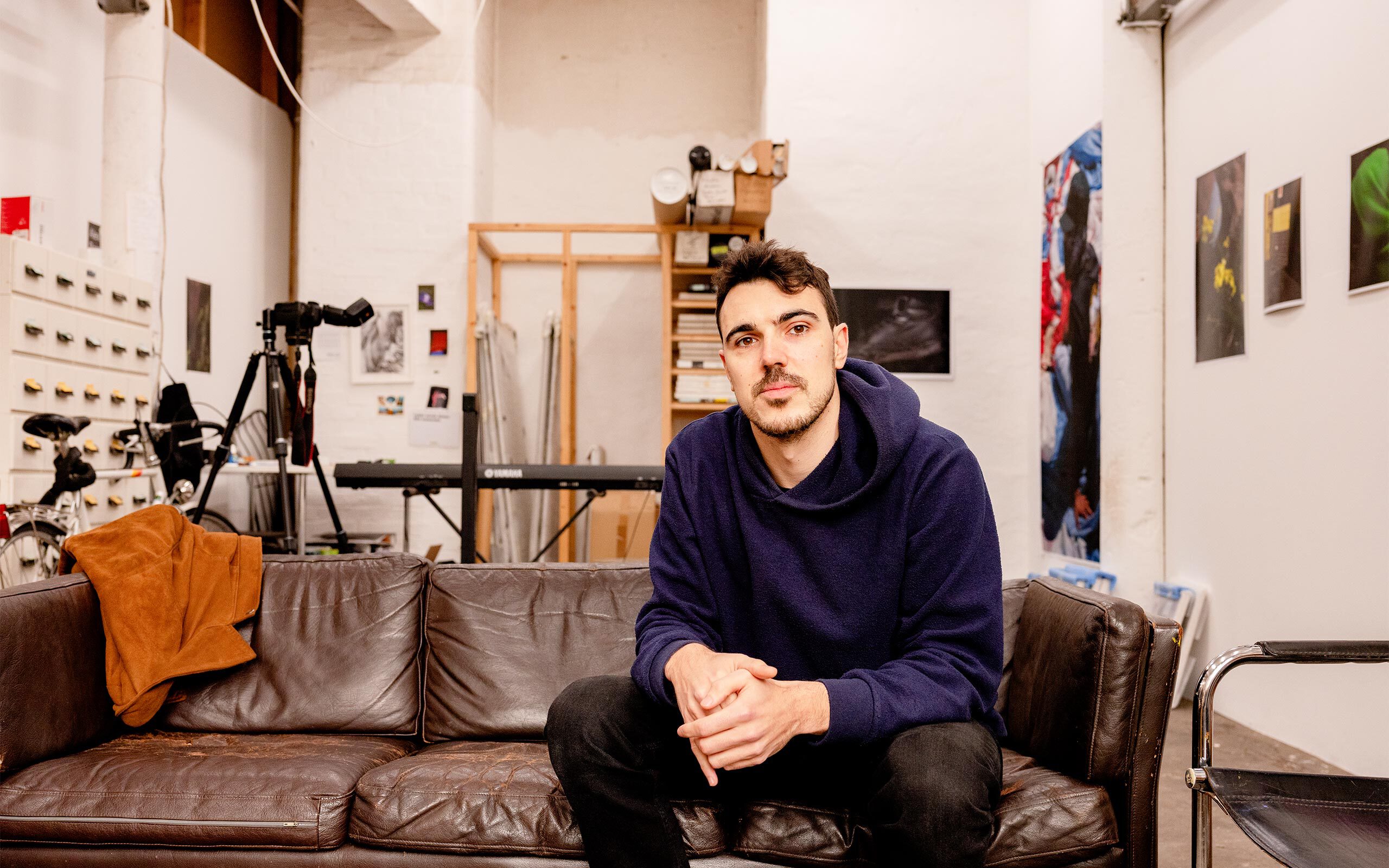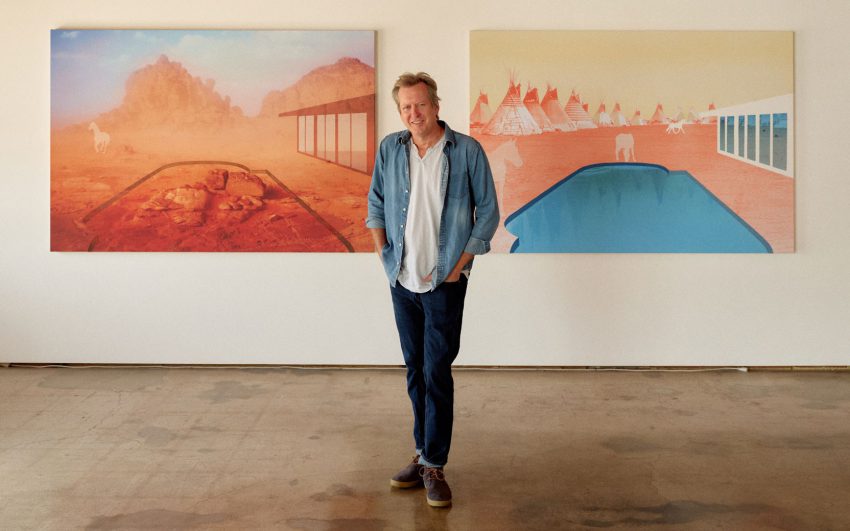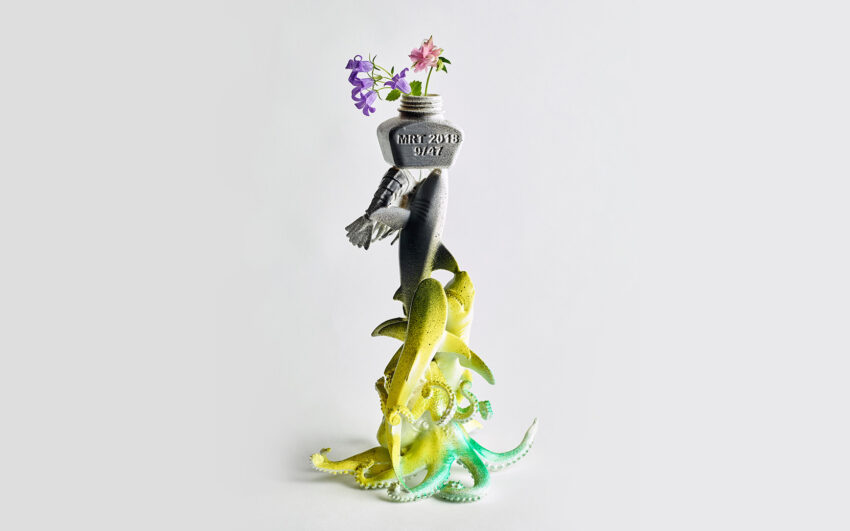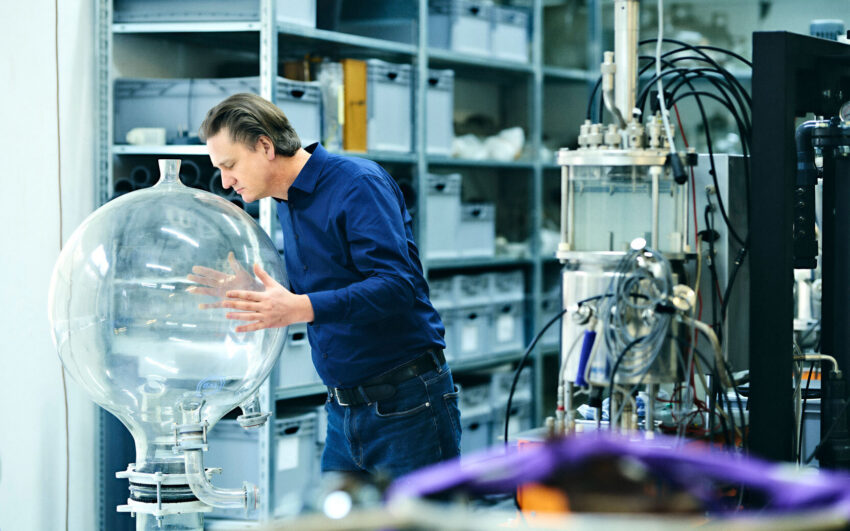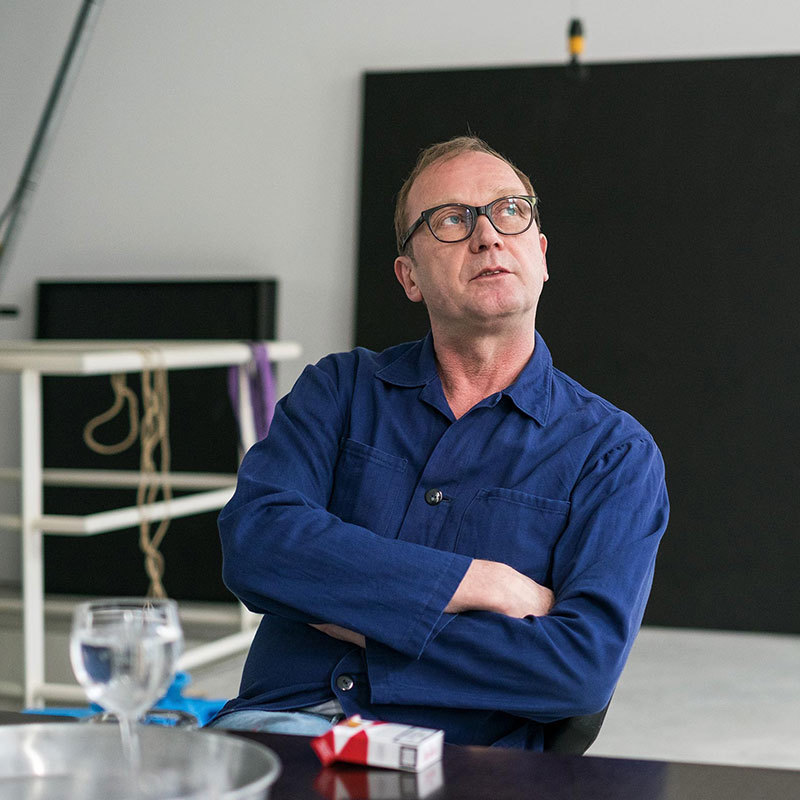In his photographs and texts, Paul Hutchinson addresses issues of equality, urban life, and social mobility. In doing so, he gives his generation a unique voice and at the same time draws a bittersweet portrait of our time. We spoke with him in his Berlin studio about his unusual path, the harsh Berlin winters, and his artistic practice not the least part of which is an intention on his part to discourage exclusion and class differentiation.
Paul, you were born in 1987 and, as you once put it yourself, “grew up in the gray post-war Berlin of the nineties”. Doesn’t really sound like a good time, does it?
That’s a pointed phrase of mine. In retrospect, I would say that I had a fulfilling, warm, and loving childhood. But what also corresponded to the reality of our lives was the fact that some of us grew up in precarious circumstances. The environment in the north of Schöneberg was rough, especially in our youth. Everybody was hanging around on the streets, getting into trouble at school, smoking pot, waiting for hours for some guy selling weed to show up, there was also violence. Back then, you always put on a kind of armor when you went out, especially in winter. Hanging out at Kleistpark, at Potsdamer Straße, at the Pallas... there will also be conflict. These are the themes of my early teens.
Have you lived in the “Pallas(seum)” yourself? The apartment block often appears in your early photos.
No, my parents live around the corner – in Goltzstraße, which is not aggressive at all, but rather pleasantly lively and still has a bit of old West Berlin charm. But as kids we naturally hung out where something was going on. Pallas was one of these anchor points because that’s where the action was. The building itself is quite crazy – built on top of an old bunker. Looking back, each cultural imprint was also important in this context. I have a German-Irish background, am halfway immigrant kid. I’m a dark type, black-haired, which was not a completely unimportant detail at the time. Many people in that area have a Turkish, Arab or broader Muslim background. Most of my friends are children of Polish immigrants. Culturally, these are obviously huge differences. Some collided in our youth, and some were irrelevant. Basically, almost everyone came from somewhere else. At some point, however, the various groups split off more and more from each other.
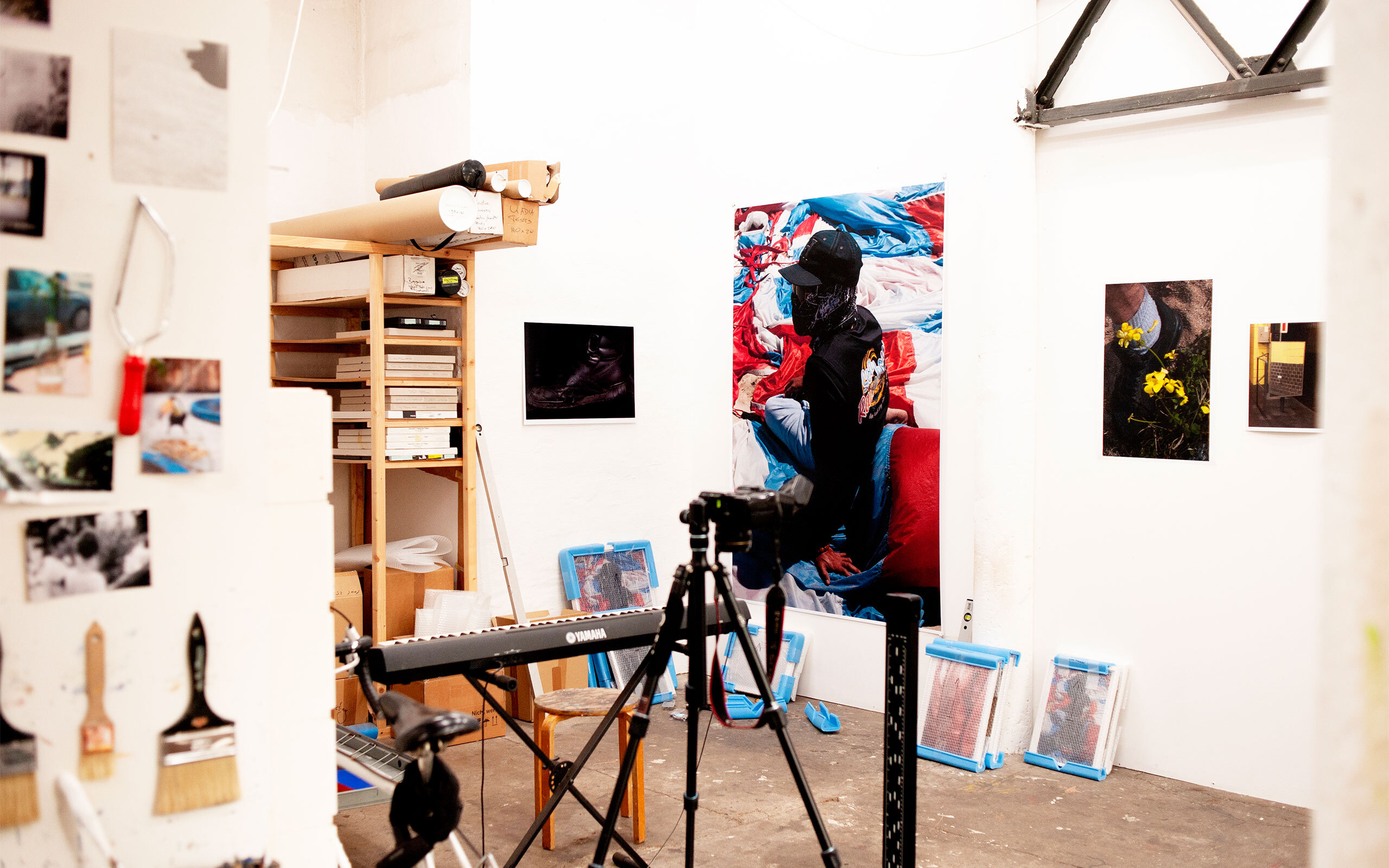
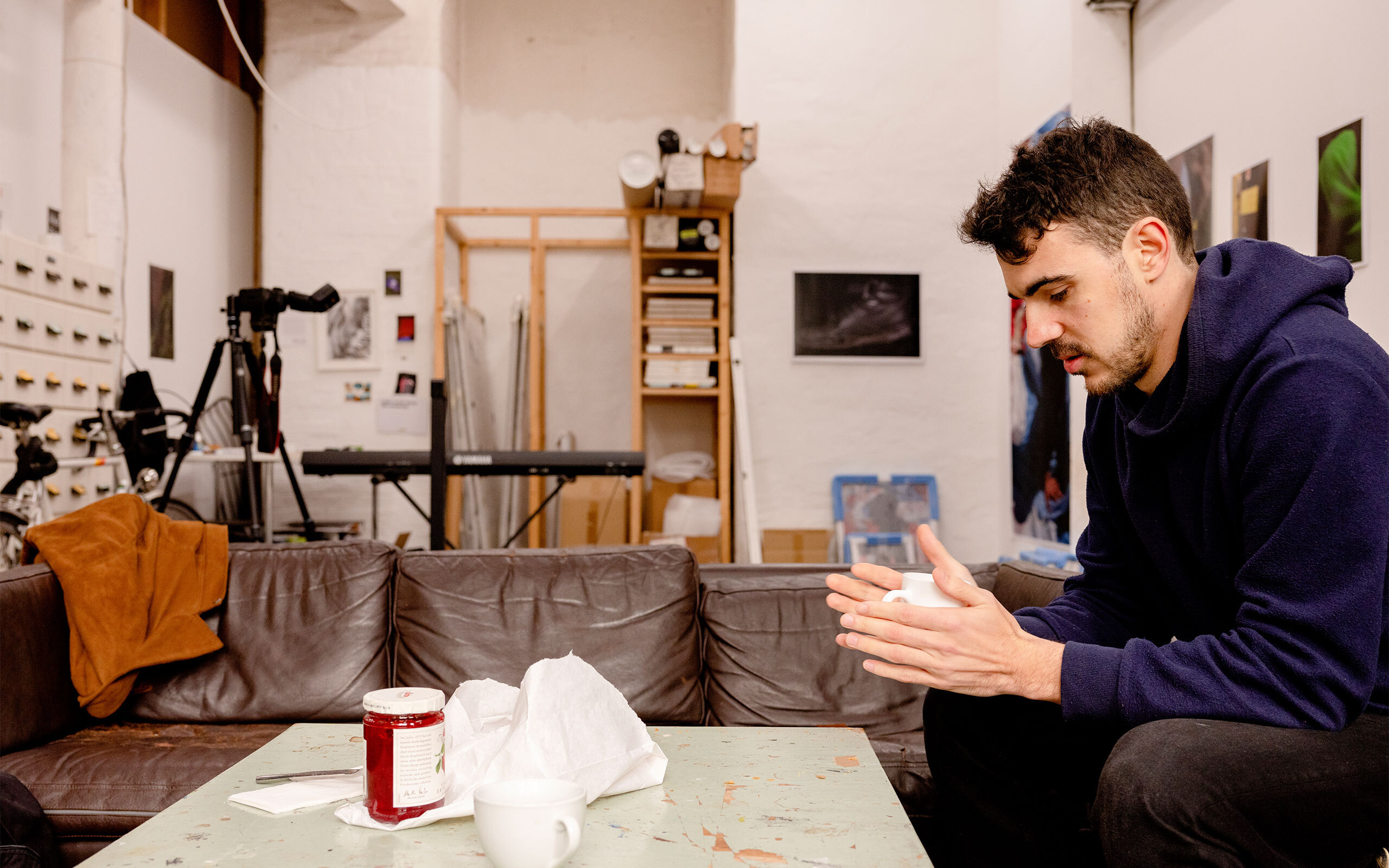
That doesn’t sound like an environment where people say: “I want to become an artist later!” How did that change, how did you get into art?
It just happened over time, really. Early on, I felt the need to get out and see more of the world than just Schöneberg North. Maybe it has something to do with the fact that as a kid I spent a lot of time in Ireland. And also I had the opportunities: I graduated from high school, I could always work, I have a German passport that enables me to access the world and scholarships and grants. After what I call a small, “chaos phase” in my early teens, I developed an awareness of my situation and I realized that if I wanted to get out, I could do it. I could apply to 100 different things and get 90 rejections. But maybe 10 would work out. And it had nothing to do with art in the first place, but with the idea of travel. I always wanted to see the world. And somehow I’ve always found a way to receive funding for it. In the last ten years, I must have spent about four or five years abroad, and since then I’ve been an expert at writing applications.
But first you stayed in Berlin and studied Social and Business Communication at Berlin University of the Arts (UdK). When did art come into your life?
After my A-levels and a first stay abroad, I completed an internship in the design department of an advertising agency. We used to do a little tagging and I thought it might be related somehow. That’s how I came to the UdK and saw for the first time that people make art and speak about art. Previously I had never really been in touch with something like that.
You have been to Rio de Janeiro, Bangalore, and many other places. How did you get there?
During my six years of study I tried to fill the semester breaks with things that made sense to me. That’s why I was always on the lookout for sponsored projects and activities abroad. Through various programs and engagements, e.g., through the Goethe Institute, the DAAD, PROMOS, Erasmus, I was in India twice, Latin America three times, and a year in Spain. In Rio de Janeiro, for example, for two months we gave photography workshops for socially disadvantaged young people in the favelas in a team of four through the program ASA – Engagement Global. In 2010, I spent three months in New York assisting Magnum photographer Steve McCurry and survived that summer thanks to One Dollar pizza slices. Things like that. During the entire time, my inner curiosity and social aspects – learning about the world and about myself – were what mattered to me. The artistic work came gradually. In the beginning, I thought I would never really succeed with that. However, in 2012, I moved to London and, with the help of Bafög and DAAD funding, I was able to do a Masters degree in Photography at Central Saint Martin’s School of Arts and Design. Since then I started to take my work more seriously. In London I also met Wolfgang, Wolfgang Tillmans that is, whom I worked for while studying and afterwards back in Berlin, too – assisting in book making and some other projects. That obviously also had an influence.
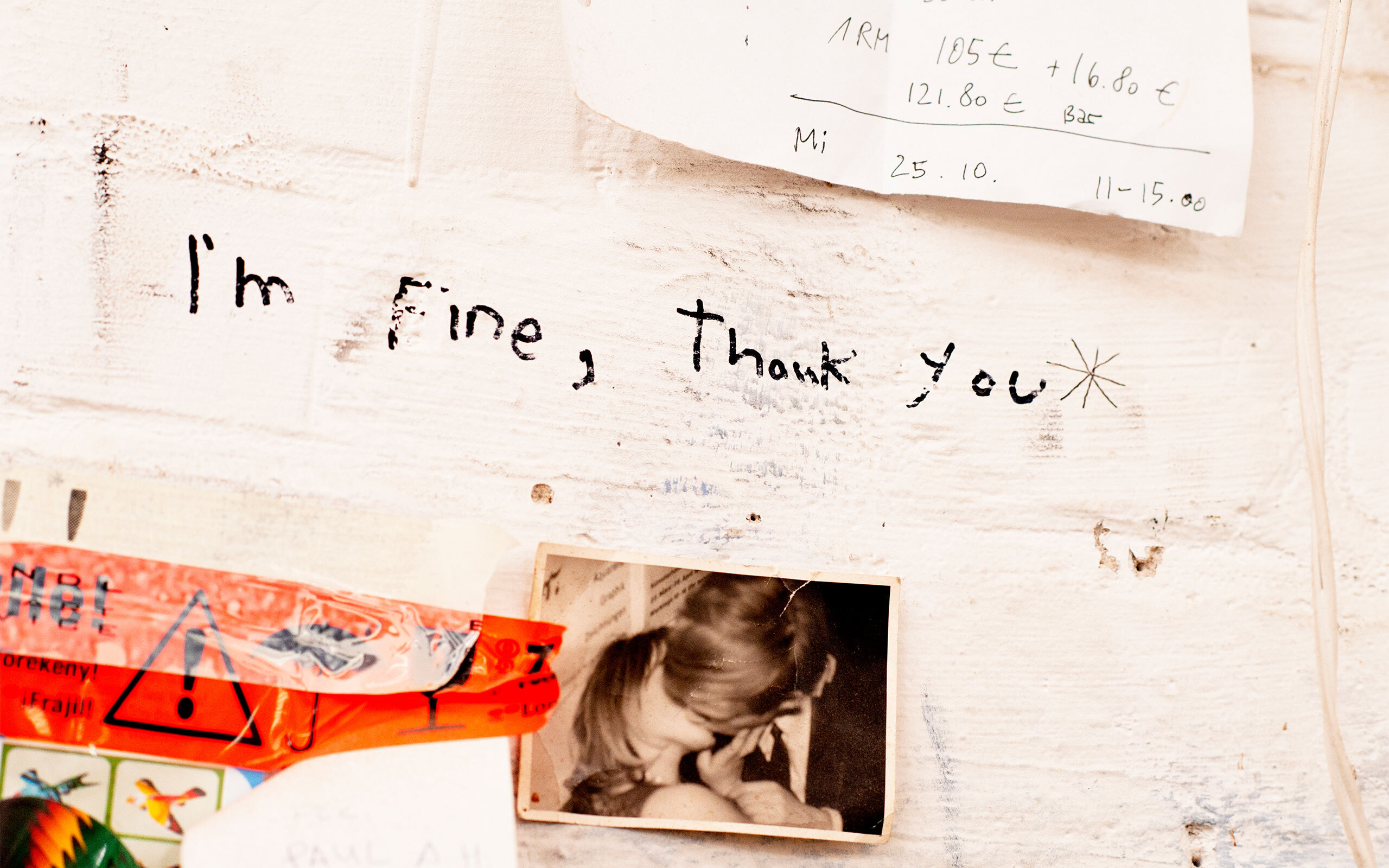
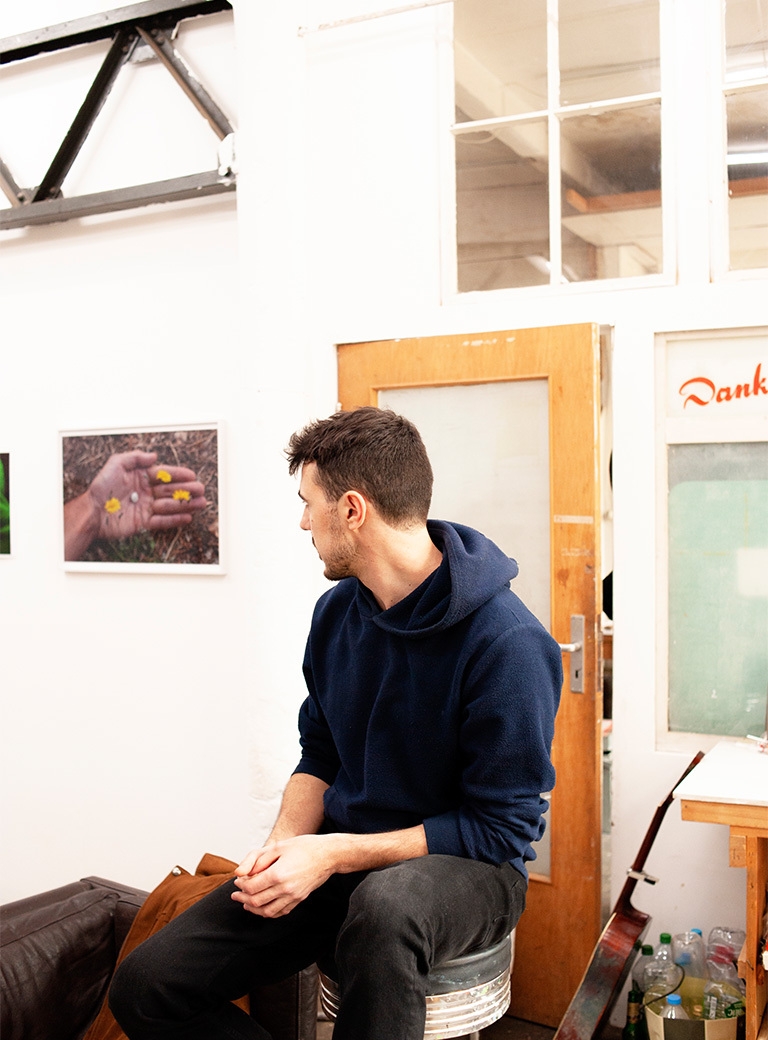
What was the moment when you realized that there was no longer a plan B, that this is not a hobby, this is me?
In fact, the feeling of knowing that I am able to do this and also having a sense of integrity about it, claiming it as my own and not just repeating the patterns of others, came in retrospect rather late, after the completion of my studies, during the last three or four years. Of course there are still references, but I believe that I have developed my own language and a discourse that stands for itself. If anyone asks me today what I do for a living, I answer: I’m an artist. That’s not so easy and natural in photography, I think. For me, it really had a lot to do with recognition from outside. To a large degree my self-reflection was initiated by others, by the way my work was perceived and how it touched people. I first had to develop a lot of work in order to convince myself that it came out of me and was authentic and not copied or in any way derivative.
What does it mean to you to photograph?
Today, as then, photography to me is always about a consciousness of “being in the world”. It is a possibility of reflection. I am here. I am doing and experiencing this. I experienced traveling through writing and through photography. At first it had nothing really to do with the pictures. As I said, I was guided by an inner curiosity about the world. And taking photographs was only a symptom of this attitude. I have a healthy body and a mind that works well, and I have the privilege of this German passport. So, here we go.
When did you start writing? As a counterpart to photography?
For the last three or four years I’ve kept what I have written. I’ve been writing for a while, but it’s only recently that I’ve afforded it space and allowed myself to take my efforts seriously; it was a similar process with my photography. I had never really felt represented in contemporary German literature, neither as the person that I am nor in the culture that I come from. With all these books and texts, I was unable to see myself in them, hear my language or the language of the people that surround me. So I felt an urge to address this and tried to find words of my own.
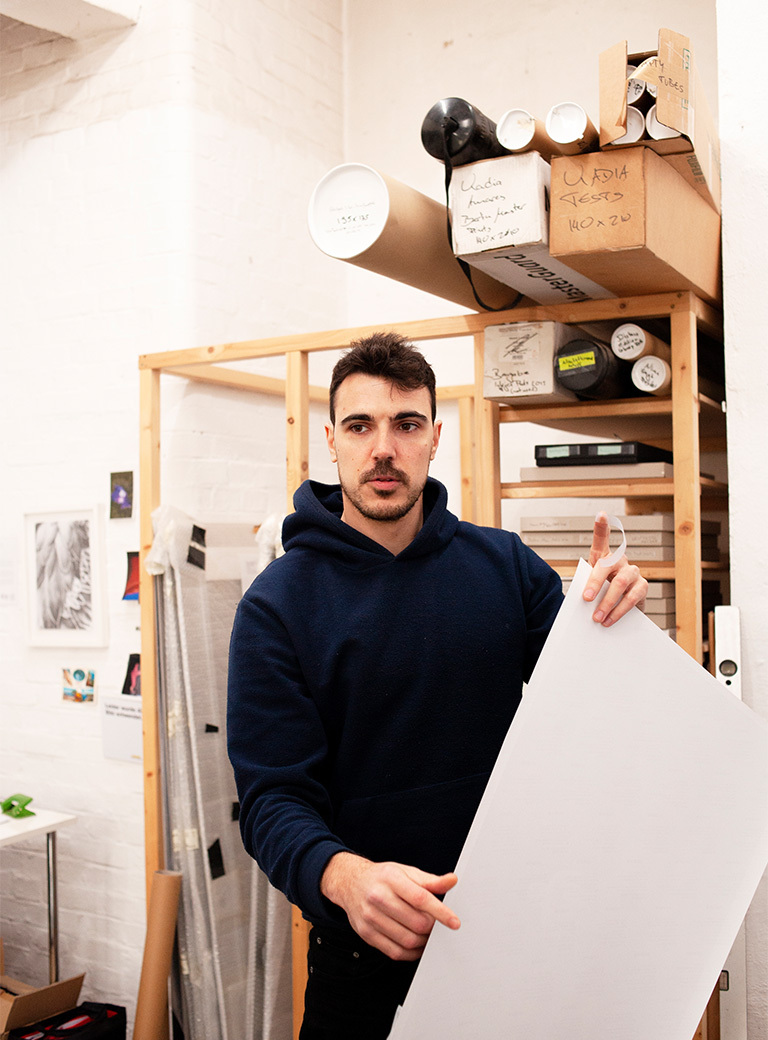
What has been your most important literature project so far?
In 2017, I was invited to exhibit at the Deutsche Oper Berlin; that was very cool. Once a year they invite an artist to show work in the context of this the super beautiful building, exemplifying modernism, designed by Fritz Bornemann in the 1960's. I felt very honored. And this was the first time that I worked with my texts in an exhibition. The show was presented over the three floors of the foyer. Opposite these floors within the building are two freestanding walls which extend over the 12 meters [approximately 40 feet] height of the building. I had the idea of placing two of my texts on each of these walls, which the audience would then encounter as they entered the auditorium. I especially liked this thought since my texts are rather rough; a contrast to what we might expect in a place of presumed high culture. I put forward the concept to the Deutsche Oper team and they were very open and supportive of the idea, an openness I still appreciate today. Ultimately, stage construction professionals installed the plotted texts, which are about 10 meters [about 33 feet] high on each of the walls. Initially I felt uneasy about how the audience would respond, but fortunately we received very positive feedback, which I was really pleased about, because it was an experiment, and the lyrics hung there for a further ten months.
You also did a project on Hip-Hop, in Bangalore.
Right. That was also my first major publication. In 2015, in the context of an artist residency at the Goethe Institute, I was there for a month. In retrospect, it was there that I started to consolidate my voice and my artistic practice. At the time, my feeling was: I want to talk about things that touch and interest me and I want to have contact with people with whom I can share something. There was an active hip-hop scene in Bangalore. Through the Goethe Institute a first contact was established and I specifically got along very well with a circle of friends right away. In the end, I spent the month mainly with them. The people were super open and inviting, took me to some rap and breakdance sessions, and we experienced a few other things together. I wasn't really interested in documenting something as such, I was just impressed by the people and their attitude towards me and these positive feelings resulted in pictures.
Sounds like something happened to you in India, would you say that?
Yeah, maybe. At the beginning of my work I was unsure, now I can say: for example, I can't photograph people I dislike.I just don't do that. It wouldn't result in anything good. And so it started, among other things, in India that I learned to trust this natural intuition. In the last years, I listened more and more to my inner voice and in the process my work became more precise and, simply, better, because I managed to be more honest to myself.
How did you end up photographing butterflies? Is the butterfly series (2016) ironic or socially critical?
Ironic, yes but critical of society, no. The series was largely created in Asia. It is about the connection between nature and urban space, and about poetry. It's a side story that came into being precisely because I followed my feelings, quite intuitively. I wanted to allow myself to do something like that. It's a small nuance of what corresponds to my work in the larger context: to see a certain fragility and beauty in something rough.
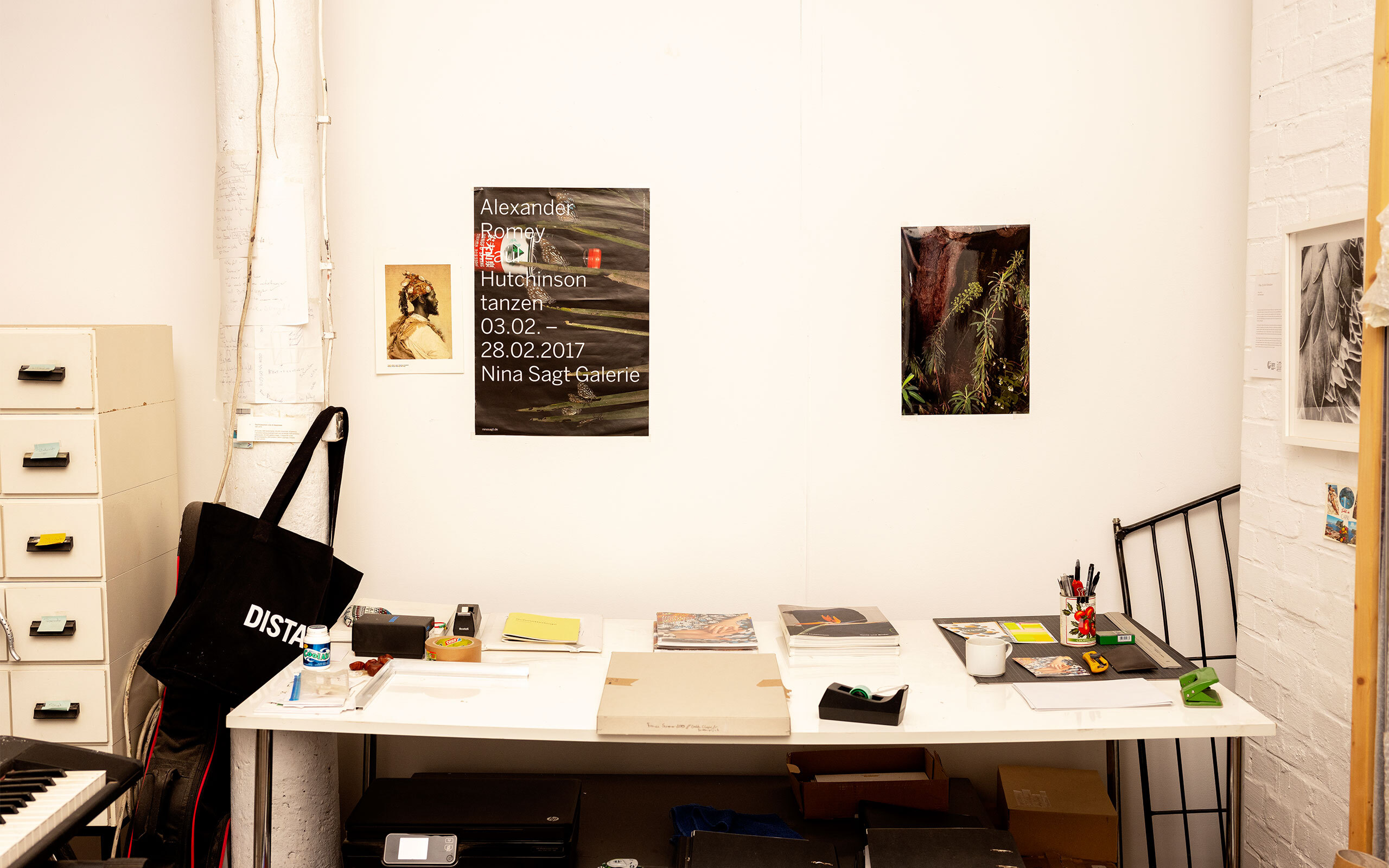
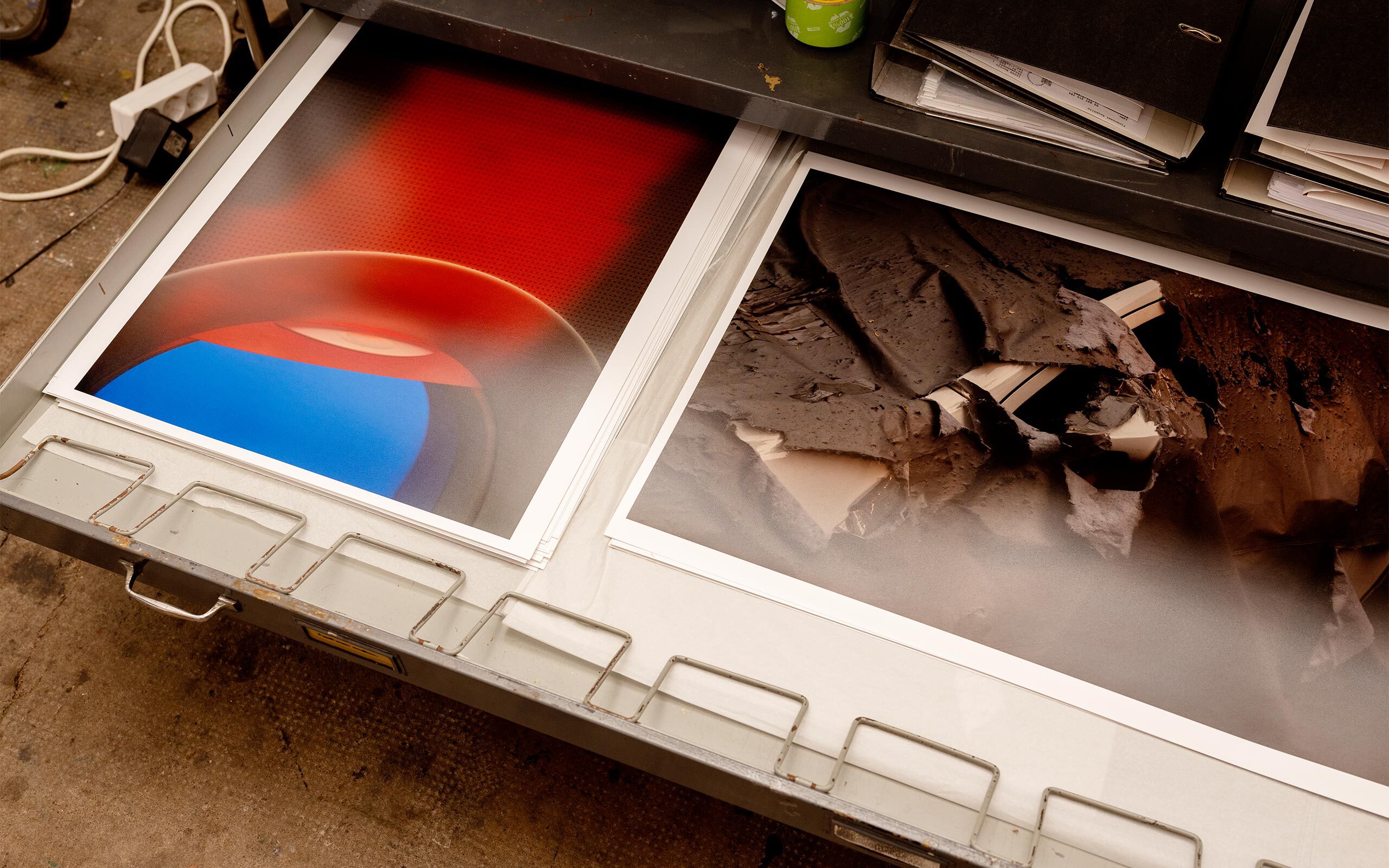
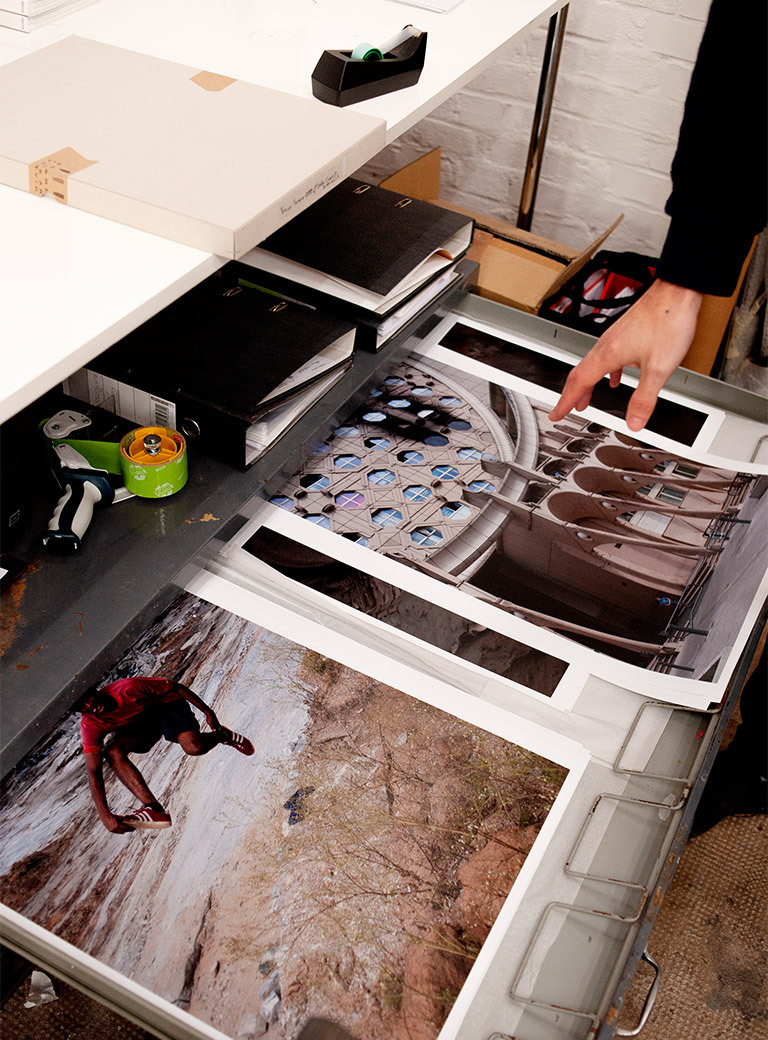
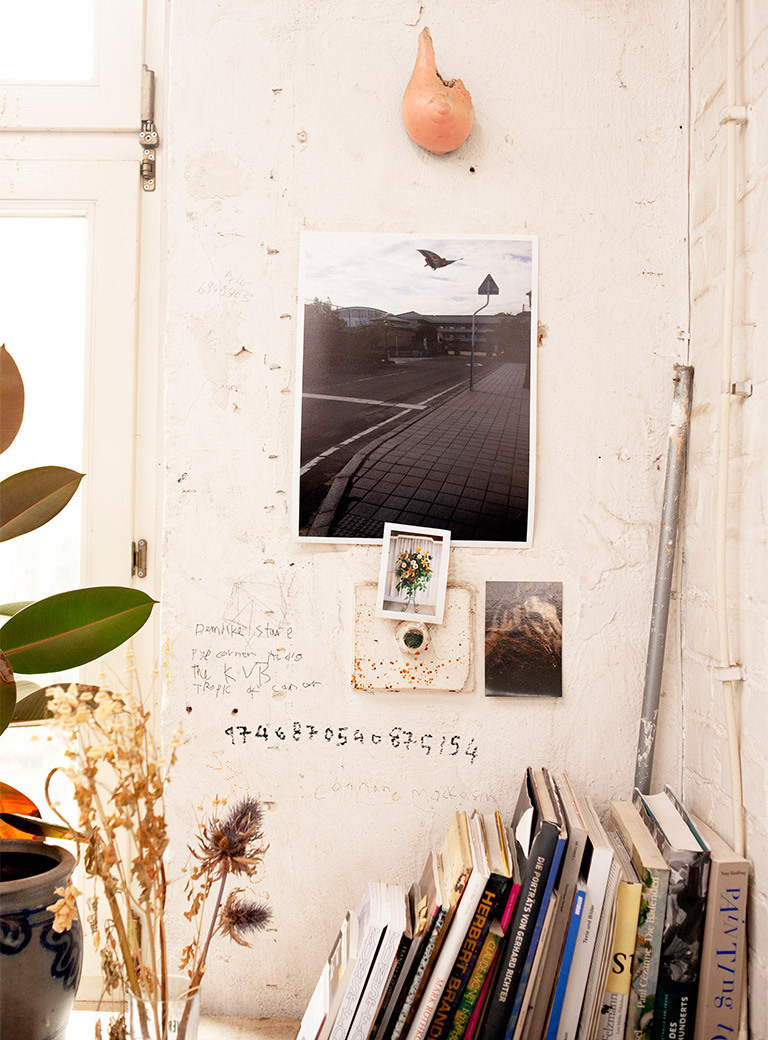
The work is great and at the same time really brave, because you balance the series at the borderline of kitsch.
Yes I know – and it can lose balance really quickly. In retrospect, it was the right exercise, walking on that border, on this fine line. That’s where it gets interesting. If I only worked clean and factual, my artistic production would be lifeless. And that is not me. But hanging pink butterflies everywhere is obviously also mindless. I am interested in the combination of the two.
What does a day in your artistic practice look like? Do you get up in the morning and decide: today I make art?
No, I don’t think like that. Every day of the week is a normal working day. For me, the most demanding aspect is to organize the work. Writing e-mails, assigning inventory numbers, making sure that the production is right, that the galleries have what they need and so on. Everything else is intuition. I do a lot of creative things on the side, unconsciously and unfiltered. For example, I often write texts on the side, in the subway, 400 words at once when some thought enters my mind, totally rough. I send them to my own archive e-mail address and edit them later. This can happen up to a year later. Generally, I produce a lot of material, and then filter it at some stage. And then in a the second step analyze what my impulses have made me do. I would say that this filtering is actually my artistic practice. When I cognitively force myself to produce something, then you often see the artistic will in the work, the Kunstwille, and I try to avoid that. Being free, being in flow – that’s a good description of my work. If I know I can let go, it doesn’t really matter where I am.
Are the books, in which you publish both your photographs and your texts to be understood as a Gesamtkunstwerk? Are they each an expression of the same artistic need, only in two media?
The two media stand for themselves. Both my texts and my images must function individually when they stand on the page. Nonetheless, they discuss similar themes and have a similarly rough and at the same time bittersweet form of articulation, both visually and rhetorically.
A detail, no matter how small, gets maximum attention in your photographs. Where does this eye for the “beside”, for the unspectacular come from?
I find that small details can also be used to illustrate larger statements about our world. For example, the new motif I am currently thinking about: The shoe that almost steps on a flower. For me this is a political act. Or the picture of my old Reebok sneaker: it contains so many aspects of the culture I stem from. And every boy on the street could relate to that. The tough Berlin winters that have worn this shoe down twice, hip hop, street culture, aggression. However, this picture is titled vorwärts (transl.: onwards). So it’s also about social mobility, about a how do we get out of here, where do we go, motion, progress. A large part of my work and of my thinking is concerned with class differentiation, the questioning of alleged authorities, rebelling at feelings of exclusion. Surely, people with an affinity for art can decode certain images easily, as they have more access, more practice and knowledge in doing so. But I am concerned with people of my background – people without academic parents or much financial security – who should also be able to access these pictures and words, and read them and maybe see something touching and relatable in them. If I can get even a little bit closer to that with images like vorwärts, then I know what I am doing my work for.
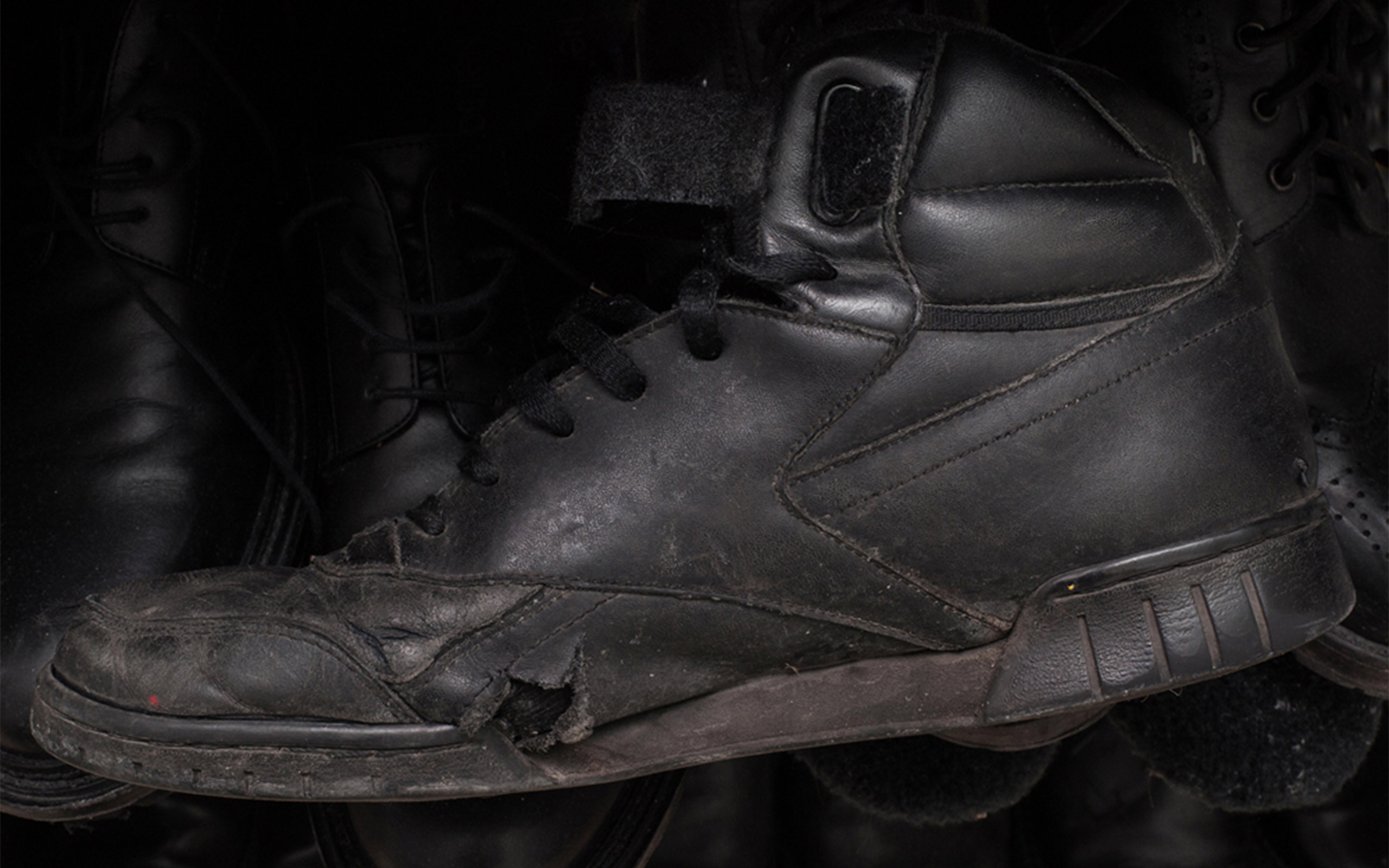
Vorwärts, 2017
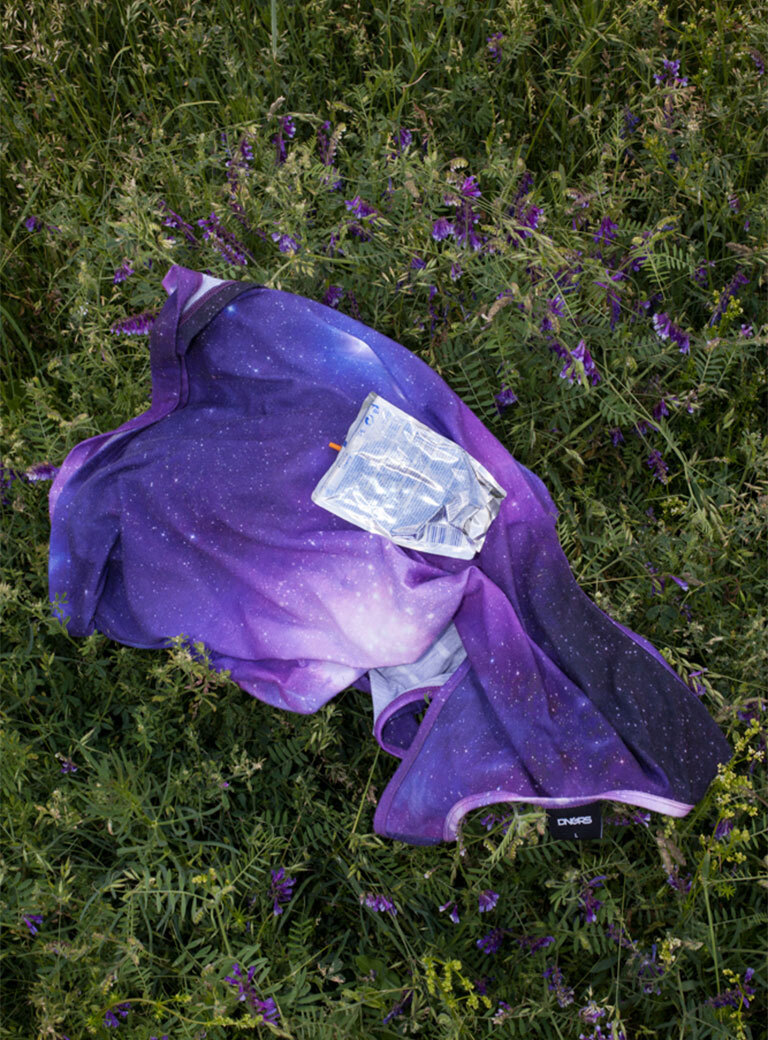
Kleistpark, 2016
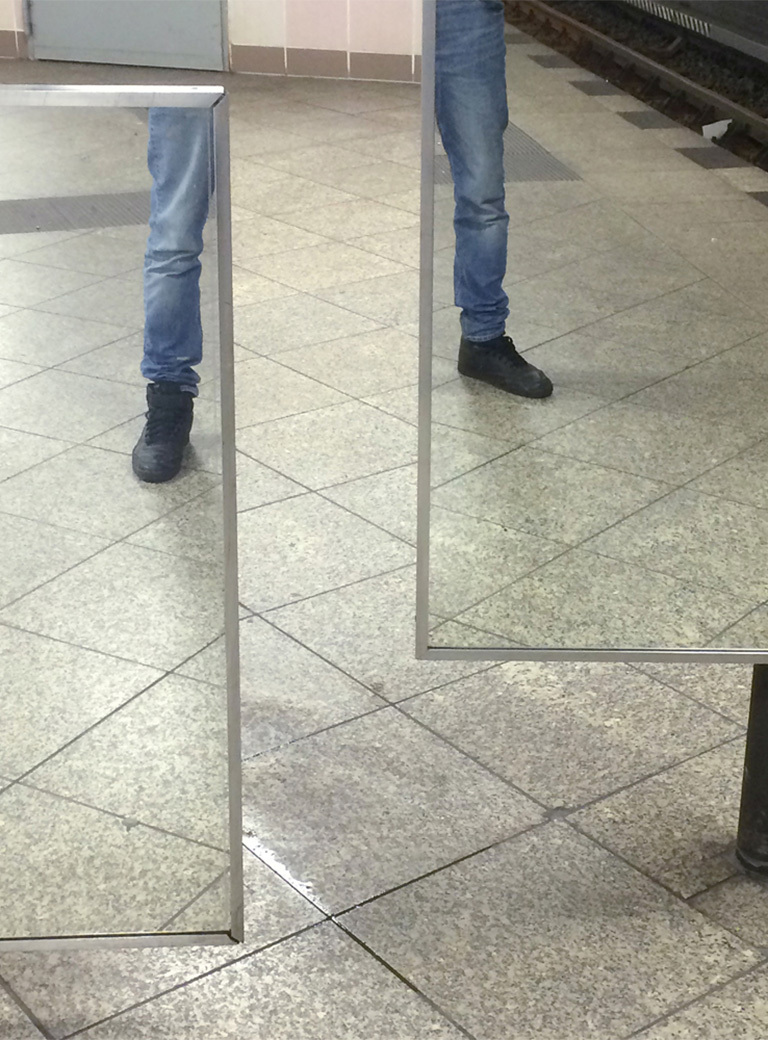
Kotti self, 2016
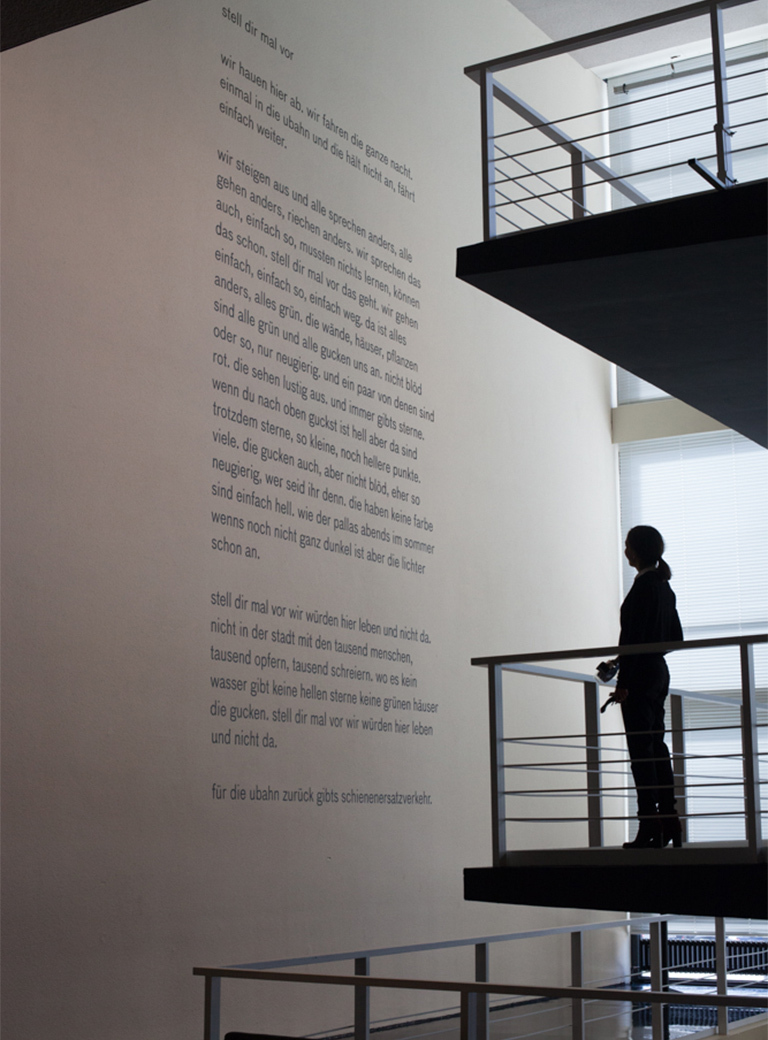
Deutsche Oper, installation, Deutsche Oper Berlin, 2017
Interview: Dr. Sylvia Metz
Photos: Franziska Rieder


